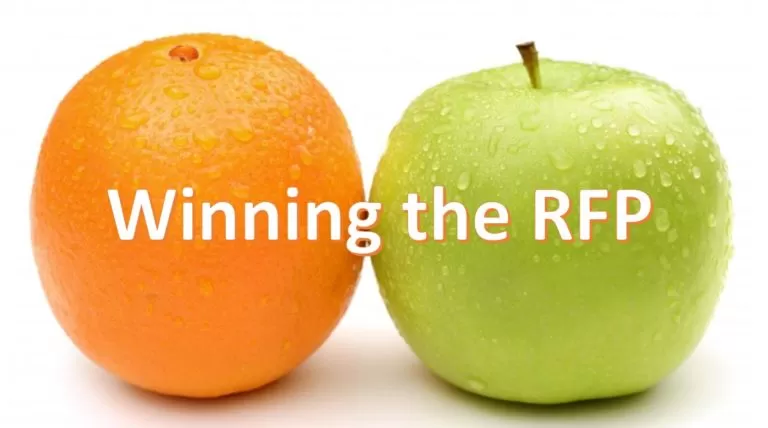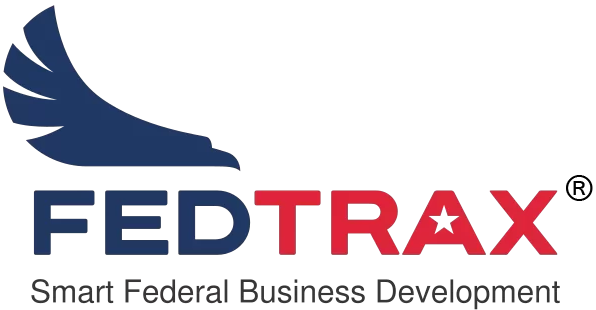
Answering the Mail the Right Way (Pt. 2)
Want to gain a competitive advantage on your next Federal RFP? Last post we talked about the traps that Federal requirements for RFPs can present for responders. Here is how to get around them.
The Orange that Looks Like an Apple
Looking like an apple helps you prevent automatic disqualification so that your solution at least gets heard. Becoming a Federal RFP orange gets you the contract. The trick is to become an orange that looks like an apple.
Creating the Competitive Advantage
The first thing we as wannabe contract winners need to establish is your competitive advantage. Many times it may be your technology—you have the better mousetrap on the market, it’s verifiable or at least defendable, and you can describe it with the enthusiasm that conveys that the customer cannot live without it.
It may be your process. That doesn’t have to mean something technical. It can mean your business process. Perhaps your process for executing a project is a best practice that others may not have. You may be the most friction-free choice and easy for the government to do business with. In Federal contracting, this often has to do with the acquisition process itself. You have access to more contract vehicles, or you’re an 8A or Super-8A (Alaska Native) that allows for single source awards. It may be your terms and pricing, or your approach to Intellectual Property (IP) that doesn’t restrict Federal rights on the technology. They hate that.
Two words for you: Risk Management. Federal agencies hate risk, even when they ask for bleeding edge innovation, it better not fail. The government is stigmatized by repeated failures, so risk avoidance is of paramount importance to those administering RFPs. Think of the possibilities listed above. These are all things that uniquely or in combination help to eliminate risk.
Whatever you do, avoid advantages that can be claimed by everybody else that are difficult to defend. Most of the time, that leaves your people on the cutting room floor of advantages. Everybody claims they have the best people, and unless the government has done business with your company before, it’s hard to separate who has the best staff.
Answer the Federal Requirements Uniquely
So the magic in your RFP response is to respond to the Federal requirements in a unique way, giving evaluators what they want to check their boxes AND what they really want, a company that gets the job done with minimal risk.
Color Facts with How and Why
This begins with how you respond to the ever-important past performance requirements. Most of us become so conditioned to checking the boxes, that the past performance description is a dry, factual representation of what you did. In addition, provide the why and how. The why and the how is what gets into how the company solves problems and manages project risk. It need not be more than 2 or 3 sentences of your narrative. Never leave the scene of a what without providing the why and how you achieved what you did. There is an important what, however, and that is what did the agency get out of it? What can they do after you did your thing that they couldn’t do before? Demonstrate and quantify the success, the mission value you provided.
Many RFPs, at least those that require human performance, ask for a technical approach, or if not a technology bid, the approach to the problem. The Federal RFP requirements already tell you what they want, the thing or outcome. As in past performance narratives, the how and why of your approach is key and (unless your company is like everyone else) will be unique to itself. When you are responding point by point to a list of requirements, every one of them can include the how and why. This mitigates the regurgitation of the requirements (link last article) and the customer’s perception of your risk on the contract.
Give them Extras
For every Federal requirement you respond to, look for the opportunity to exceed the bare minimum stated. How can you provide more than what is asked for at minimal cost or exposure to your company, but at tremendous perceived value to the government? Here are a few examples.
The requirement may state that there is a certain standard for quality, security or performance needed, typically referencing another document that defines the standard. This should go without saying, but if your company exceeds that standard, state it and defend it, listing your 3rd party certification or other verification that proves it. That is much more powerful than a blanket statement that says “meets or exceeds the Federal requirement listed” with zero backup.
In a technical approach to a task, if your company uses special tools that automate aspects of the task and make it repeatable and standard, state that you do and what those tools are. This happens in software development and cybersecurity, where effective responses highlight their CI/CD pipeline stack typically used, or perhaps the software they use to scan and fix cybersecurity controls. This showcases your company’s innovative thinking and demonstrates you are always seeking to reduce the level of effort and cost, and at a minimum creates the impression of lower risk of getting all the work done.
Page count often limits your total response; however, it may not preclude you from adding an entire section that isn’t specifically spelled out in line by line requirements. Creating a Unique Differentiators, Risk Management or similar section, strategically placed in your response under its own heading will set your company apart IF you have correctly identified that competitive advantage we talked about above.
Mission Value
Federal agencies, even Civilian agencies, are focused upon their mission. That mission may be the Army creating a better means to overwhelm the enemy or the Forestry Service trying to better engage the public. Mission Value is really what the customer wants, not Best Value or LPTA or other terms that can restrict your thinking. All your responses should be couched in that mission, regardless of if it is stated in the RFP or not. Selecting you as the winner of this proposal contest helps the government further its mission goals. State the why and how in clear, understandable and defendable terms.
You can still answer the mail of the Federal requirements listed in the RFP. Doing so creatively, showing your ability to get the job done with minimal risk will increase your win rate dramatically.
